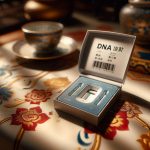Team Telomere stands as a beacon of hope for families grappling with dyskeratosis congenita and related telomere issues. At the helm, Katie Stevens shares her touching journey, highlighting the grave importance of telomere tests in turning the tide against these rare but fierce conditions. It’s more than just science; it’s about saving lives one diagnosis at a time.
Exploring the Purpose of Team Telomere
Initially established 15 years back under the name Dyskeratosis Congenita Outreach, Team Telomere emerged from a tiny gathering of parents united by their quest for answers through the bone marrow failure program at the National Institute of Health. This band of individuals was navigating the murky waters of a scarcely known medical condition.
Telomere biology disorders (TBDs) such as Dyskeratosis Congenita are exceptionally rare, making diagnosis a needle-in-a-haystack affair despite advancements in medical science and easier access to information. Against this backdrop, Team Telomere has dedicated itself to spreading awareness, advocating for patients’ rights, and propelling research forward.
The organization’s heartbeat is to enlighten doctors about telomere-related disorders. The goal? To ensure patients worldwide can undergo telomere length tests which pave the way for them getting treatment that hits the mark. Over recent years, they’ve funneled an impressive $360,000 into research efforts and have championed making treatments more accessible across continents.
In essence, Team Telomere’s journey—from its humble beginnings as a small support group to becoming a beacon of hope in TBD advocacy—underscores its unwavering commitment to not just finding answers but also fostering a global community where these rare conditions can be understood and managed effectively.
Tell us about your experience prior to becoming a part of Team Telomere
In 2012, my eldest son Riley, then only 12, faced a daunting medical challenge when doctors discovered he had bone marrow failure. Initially believed to be idiopathic in nature, his condition left us with few options: ATG therapy or a bone marrow transplant. Unfortunately, neither of his siblings was a compatible donor, pushing us towards ATG treatment.
However, the situation took a turn for the worse when this approach failed to yield positive results. During this critical period, Riley’s doctor attended a conference and learned about the significance of telomere length in diagnosing certain genetic disorders. This new insight led to the discovery that Riley’s dramatically short telomeres were at the heart of his medical issues.
This breakthrough diagnosis linked Riley’s condition to Dyskeratosis Congenita and we immediately sought support from Dyskeratosis Congenita Outreach, now known as Team Telomere. It was there we encountered Dr. Suneet Agrawal who introduced us to an innovative reduced-intensity bone marrow transplant designed specifically for patients with shortened telomeres.
The decision wasn’t easy but necessary; we relocated across the country from Idaho to Boston for my son to undergo this experimental treatment. Today, six years post-transplant and twenty years old, Riley thrives as a river raft guide, an outcome once thought nearly impossible.
My journey didn’t end there; it propelled me into active participation within the community that gave hope back to our family. From serving on the board of directors to assuming leadership roles within Team Telomere, I’ve committed myself fully to supporting others facing similar battles. Presently holding the position of executive director at Team Telomere, I continue advocating for research and support surrounding Dyskeratosis Congenita and related conditions.
Understanding Telomeres and Their Significance for Our Well-being

Telomeres serve as the chromosomes’ safeguarding tips, similar to how an aglet protects the end of a shoelace. When these protective caps wear down or go missing, just like a frayed shoelace begins to come apart at the ends, our cells face similar unraveling. From the moment we’re born with lengthy telomeres, aging gradually shortens them, propelling us through the natural aging process.
However, individuals suffering from Telomere Biology Disorders start life on the back foot with significantly shorter telomeres than average. This condition makes their bodies considerably more susceptible to damage and mirrors what one would expect in someone decades older. As such, this disease progressively deteriorates their health over time.
The expected lifespan for those battling shortened telomeres hovers around 16 years. Efforts to extend this prognosis can inadvertently introduce new health issues previously unseen in these patients. On a bright note, there are cases where individuals defy odds; take for example a child who has grown into adulthood without typical complications and continues to lead a promising life. It’s crucial for him, particularly his lungs and skin due to their rapid cell turnover rate, to undergo regular monitoring.
Such insights shed light on not just the fragility of human life but also underline the resilience found within some facing dire prognoses. It emphasizes humankind’s ongoing battle against genetic disorders and our relentless pursuit of understanding and outmaneuvering them for longer, healthier lives.
Identifying short telomeres
When a person faces severe health issues involving multiple organs, specifically when they encounter problems with their bone marrow or experience significant damage to both their lungs and liver, medical professionals opt for specialized diagnostics. Generally, children are more likely to suffer from bone marrow complications, while adults tend to deal with lung issues such as pulmonary fibrosis. The initial step in diagnosing these conditions involves measuring the length of telomeres through specific tests. Telomeres, which cap the ends of chromosomes, play a crucial role in cellular aging and health.
Following this assessment, doctors delve deeper by analyzing various gene panels to pinpoint the exact reasons behind the shortened telomeres. This investigation targets dyskeratosis congenita, a condition linked with mutations in up to 15 known genes. Despite these advances in genetic understanding, there remains a significant proportion—about 30%—of individuals affected by this disorder whose genetic cause is still undiscovered.
This approach underscores the complexity of diagnosing and understanding rare genetic disorders and highlights the importance of continuous research and development in genetics for better patient outcomes.
Why is it important for Team Telomere to inform medical professionals? What do you think is lacking?
Dyskeratosis Congenita is an extremely rare condition that could have had devastating effects on my son if not for the proactive approach of his hematologist. This doctor’s decision to perform telomere length tests was a turning point, revealing that traditional treatments like radiation and chemo would have been disastrous due to my son’s genetic vulnerability. It highlights a critical issue: many patients with short telomeres cannot withstand conventional bone marrow transplants.
Raising awareness among medical professionals about the importance of telomere testing is crucial. Despite the absence of typical symptoms, it doesn’t mean one’s telomeres are in good shape. Currently, access to these tests is restricted mainly to two institutions, which limits their availability. We’re striving to broaden this access and navigate through insurance hurdles and global obstacles obstructing the path.
Insurance companies often block funding for this essential test when visible signs of illness are missing, hampering early diagnosis and ongoing care efforts. Advocating for universal access to gene panels and telomere testing from birth is a mission we’re passionate about. Though gaining traction, its high cost remains a deterrent for many.
The story of my son—a healthy 12-year-old who suddenly fell critically ill—underscores the unpredictable nature of telomere biology disorders. Following his transplant, he has not required additional treatments, unlike others facing similar conditions where continuous monitoring becomes part of their daily lives.
Promoting widespread testing can significantly enhance our understanding of these disorders and improve overall human health insights related to telomeres.
Future advancements for helping those with short telomeres?
The excitement around CRISPR technology is palpable in the genetics community, though it’s not yet a solution for certain diseases. However, the horizon looks promising with the development of alternative therapies such as small molecule treatments and innovative blood tissue remedies that steer clear of bone marrow transplants. This sparks a sense of hope among researchers and patients alike.
Having short telomeres isn’t ideal due to their link with aging, yet this very connection has piqued widespread interest. The prospect of experts in disease research and anti-aging joining forces is enticing. Given that diseases share similarities despite their differences, increased collaboration could significantly boost scientific progress.
Looking ahead, there’s a strong sense of optimism about what lies beyond. Reflecting on the significant strides made in science over the past decade fills one with wonder about future discoveries. The trajectory of scientific advancement promises even more groundbreaking achievements as researchers continue pushing boundaries.


















